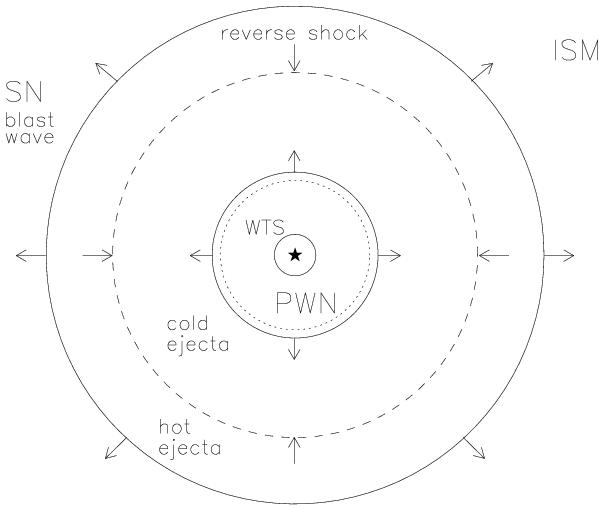Fig. 5

Schematic view of a young composite supernova remnant structure (not to scale). The supernova (SN) blast wave propagates in the interstellar medium (ISM). Inside the SN remnant a pulsar wind nebula (PWN) powered by the pulsar (star) is formed. The PWN expands into the cold SN ejecta, which from the outer side are being heated/compressed by the reverse shock facing inwards in the SN remnant. Inside the PWN, where the pulsar wind pressure balances the pressure of the surrounding matter a wind termination shock (WTS) is formed. The inner solid line indicates the shock driven into the inner ejecta by the accelerating PWN. Dotted line depicts the position of the contact discontinuity separating the shocked SN ejecta overtaken by the PWN outer shock, and the shocked pulsar wind plasma having gone through the WTS. Detailed discussion of SNR/PWN structure can be found in e.g. Kennel & Coroniti (1984) or Truelove & McKee (1999).
Current usage metrics show cumulative count of Article Views (full-text article views including HTML views, PDF and ePub downloads, according to the available data) and Abstracts Views on Vision4Press platform.
Data correspond to usage on the plateform after 2015. The current usage metrics is available 48-96 hours after online publication and is updated daily on week days.
Initial download of the metrics may take a while.


